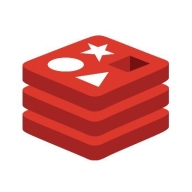

Google Cloud Bigtable and Redis are competitive products in the NoSQL database market, designed to meet different data processing needs. Google Cloud Bigtable appears more suited for enterprise-level applications due to its high scalability and integration within Google's ecosystem, whereas Redis is preferable for users requiring fast data retrieval and minimal latency.
Features: Google Cloud Bigtable supports high scalability, real-time analytics, and integration within Google's cloud services, which are advantageous for large-scale data operations. Redis, on the other hand, provides in-memory data structures, supports diverse data types, and offers high-speed caching and messaging capabilities that enhance performance.
Room for Improvement: Google Cloud Bigtable could benefit from simplified deployment options and improved user interface features. Enhancements in specific cloud integration limitations could also offer more flexibility. Redis would benefit from multi-threaded architectures for processing efficiency and could enhance built-in management tools for better large-scale deployment insights. Expanding its persistence options to match traditional databases could further improve its reliability.
Ease of Deployment and Customer Service: Redis ensures easy deployment facilitated by extensive documentation and a supportive community, making installation and configuration straightforward. Meanwhile, Google Cloud Bigtable's deployment is initially more complex due to its integration with Google Cloud services but is supported by comprehensive documentation and responsive customer support, offering substantial assistance once operational within the cloud infrastructure.
Pricing and ROI: Google Cloud Bigtable's pricing reflects its enterprise capabilities, which can mean higher initial costs but potentially substantial ROI for businesses requiring integrated, large-scale data management solutions. Redis offers a lower cost approach, with efficient resource utilization ideal for smaller scale or targeted high-performance tasks, resulting in quick returns and cost savings for specific applications.
| Product | Market Share (%) |
|---|---|
| Redis | 3.1% |
| Google Cloud Bigtable | 4.6% |
| Other | 92.3% |


| Company Size | Count |
|---|---|
| Small Business | 11 |
| Midsize Enterprise | 3 |
| Large Enterprise | 8 |
Cloud Bigtable is Google's NoSQL Big Data database service. It's the same database that powers many core Google services, including Search, Analytics, Maps, and Gmail.
Redis offers high-speed, in-memory storage, renowned for real-time performance. It supports quick data retrieval and is used commonly in applications like analytics and gaming.
Renowned for real-time performance, Redis delivers high-speed in-memory storage, making it a favorite for applications needing quick data retrieval. Its diverse data structures and caching capabilities support a broad array of use cases, including analytics and gaming. Redis ensures robust scalability with master-slave replication and clustering, while its publish/subscribe pattern renders it reliable for event-driven applications. The solution integrates smoothly with existing systems, minimizing performance tuning needs. Although documentation on scalability and security could be improved, Redis remains cost-effective and stable, commonly utilized in cloud environments. Enhancing integration with cloud services like AWS and Google Cloud and refining GUI may improve usability.
What are the key features of Redis?Redis finds application across industries for tasks like caching to improve application performance and speed, minimizing database load. It enables real-time processing for session storage, push notifications, and analytics. As a messaging platform, Redis handles high traffic and supports replication and clustering for cross-platform scalability.
We monitor all Managed NoSQL Databases reviews to prevent fraudulent reviews and keep review quality high. We do not post reviews by company employees or direct competitors. We validate each review for authenticity via cross-reference with LinkedIn, and personal follow-up with the reviewer when necessary.